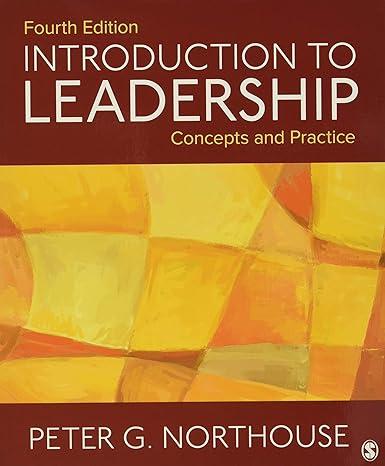Question
As you know, academic institutions rightfully seek to bring in a diverse set of students. They know that having people from diverse backgrounds in class
As you know, academic institutions rightfully seek to bring in a diverse set of students. They know that having people from diverse backgrounds in class with one another, interacting with one another, and building relationships with one another provides the atmosphere for the students to learn about and appreciate others’ perspectives. In addition, because they are “academic” institutions, they want to make sure that they bring in students with the qualifications to succeed in the university setting. Sometimes these two goals compete such that academic qualifications may be downplayed to increase diversity.
For example, Harvard was recently sued by Asian Americans who claimed that they had been discriminated against in the admissions process, a case that, as of the writing of this chapter, had recently been heard by the Supreme Court. Harvard uses several different criteria for its admissions decisions including an “academic index” (using things like test scores and high school GPA) along with additional criteria such as an “extracurricular” rating, “athletic” rating, and ratings by two teachers and a school counselor. However, the main issue revolves around the “personal” rating made by the admissions group (there is also a personal rating made by alumni). The plaintiffs argue that the admissions group gives lower personal ratings to Asian Americans to offset the higher academic ratings these applicants have. Harvard argues that it uses multiple criteria and that when examining the outcomes, there is no discrimination. They also argue that using only the academic rating would result in cutting their Black and Hispanic admits by half.
This case provides a unique platform for discussing many issues regarding equal employment opportunity law, particularly in what types of statistics support that an organization is or is not discriminating against an individual or a particular group.
So, does Harvard admissions illegally discriminate against Asian American applicants? Those on the plaintiff’s side of the issue point to the fact that Asian American applicants with the same or higher academic ratings have a much lower likelihood of being admitted compared to other racial groups. Those on the defendant’s side of the issue note that in the end, the percentage of Asian American students admitted reflects the percentage of those who applied.
QUESTIONS
Do you think that Harvard is discriminating? Why or why not?
What type of additional data would you want that would tell you whether or not Harvard is discriminating?
Step by Step Solution
3.47 Rating (150 Votes )
There are 3 Steps involved in it
Step: 1
It is a complex issue with reasonable arguments on both sides On the one hand the statistics presented by the plaintiffs showing Asian American applicants with equal or higher academic ratings having ...
Get Instant Access to Expert-Tailored Solutions
See step-by-step solutions with expert insights and AI powered tools for academic success
Step: 2

Step: 3

Ace Your Homework with AI
Get the answers you need in no time with our AI-driven, step-by-step assistance
Get Started


